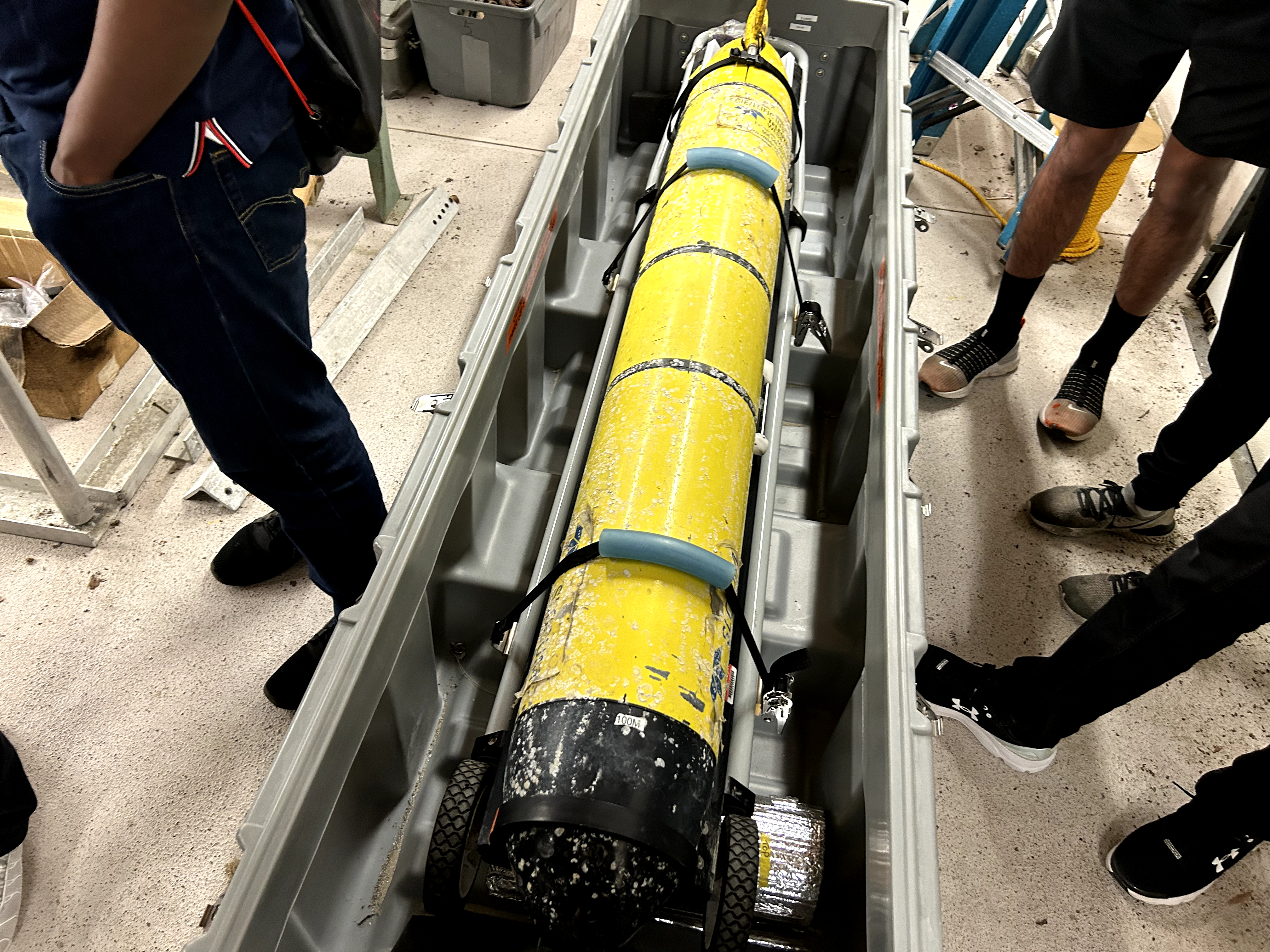Making Sense Of Climate Change 1: The History and Physical Science of Global Warming
April 20, 2024, at the Horn Port Laboratory an Blackwater National Wildlife Refuge

An image of Horn Point Laboratory's Storm Glider "Striper".
On April 20, 2024, I visited the Horn Point Laboratory and the Blackwater National Wildlife Refuge. The Horn Point Laboratory has conducted research and reproduction of oysters, reduced algal blooms in the Chesapeake Bay, and also monitors the water temperature of the Chesapeake Bay with autonomous machines.
Oyster populations are decreasing in the Chesapeake Bay, which has been worsening the health of the Chesapeake Bay. On the other hand, algal blooms’ presence in the Chesapeake Bay has also harmed the Chesapeake Bay. In addition, scientists are interested in improving the way they predict future tropical storms, in which their current models are based on water temperatures.
The Horn Point Laboratory has focused on the hatchery of oysters so they could boost the oyster population in the Chesapeake Bay and stop the population’s shrinking. Meanwhile, the Horn Point Laboratory is focused on reducing the algal blooms. In addition, the Horn Point Laboratory has also deployed autonomous gliders in the Chesapeake Bay to monitor its water temperatures so storm forecasters could better predict future storms like hurricanes.
Afterwards, we visited the Blackwater National Wildelife Refuge. The function of Blackwater NWR is to provide a sanctuary for birds needing shelter as they migrate. As we drove across the refuge, we saw some areas’ trees lack leaves, indicating that the sea level has changed and rendered those areas no longer suitable for tree life. Meanwhile, we also witnessed rising water levels in the marshes that contain plenty of fish, suggesting that more fish from the Chesapeake Bay are making their way closer to the Blackwater NWR.
Upon returning back, I did some more research on the Blackwater NWR and the Horn Point Laboratory and how they communicate with the rest of the community. The Blackwater NWR has offered various volunteer opportunities to the community so that more people can get involved in helping them support and keep the sanctuary in great shape. Meanwhile, the Horn Point Laboratory has also offered virtual seminars known as “Bay 101 with HPL”, in which people attending those seminars get to learn more about the Chesapeake Bay and how the laboratory tries to keep it healthy. The attendees get to learn about oysters and how they impact the Chesapeake Bay’s health.


